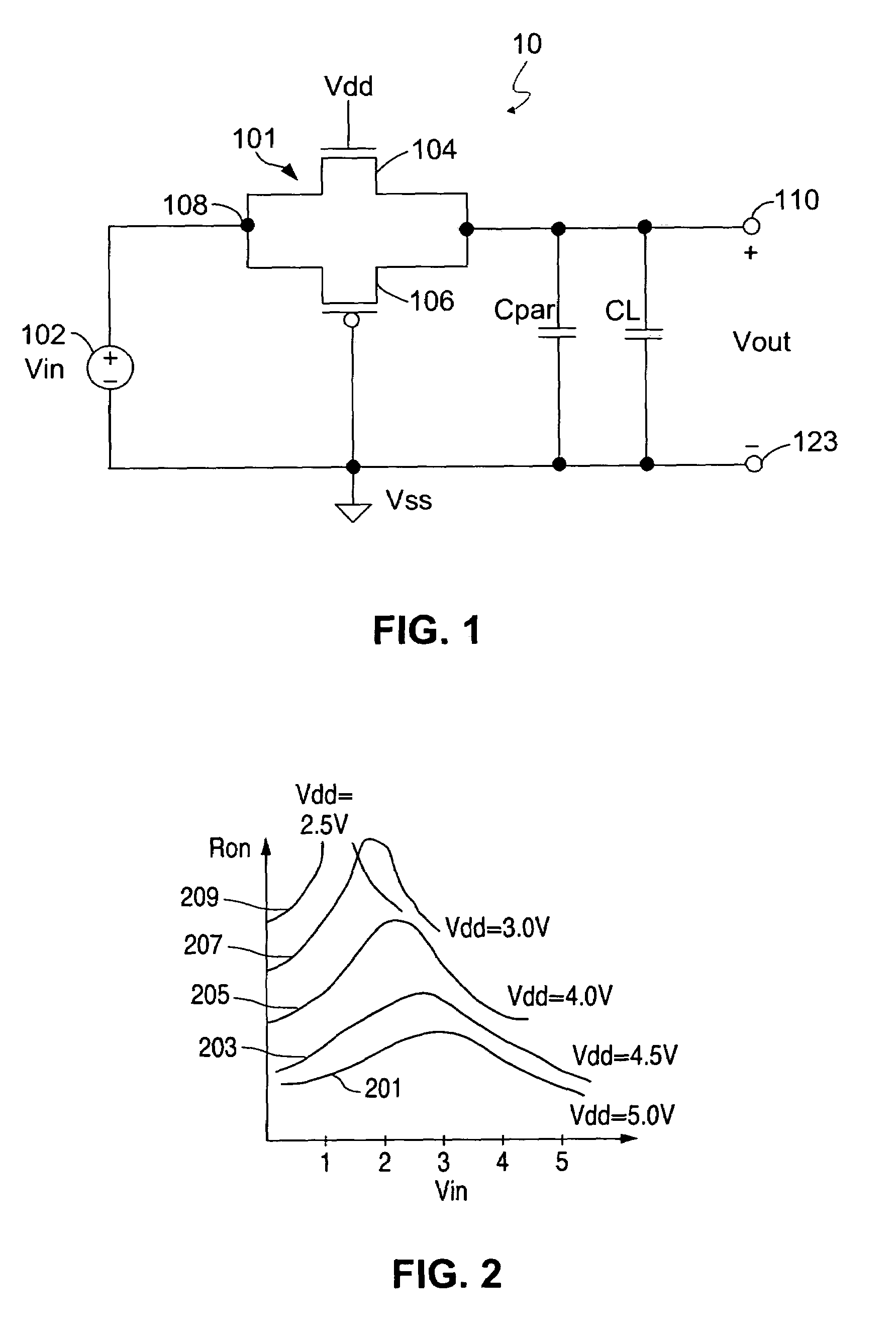Constant RON switch circuit with low distortion and reduction of pedestal errors
a constant ron, pedestal error technology, applied in the field of switch circuits, can solve the problems of low vdd level, low drive voltage or turn-on voltage, non-ideal behavior of the “on” resistance rsub>on /sub, increase the fabrication cost, etc., to achieve the effect of reducing the value of ron, reducing the distortion, and reducing the bandwidth
- Summary
- Abstract
- Description
- Claims
- Application Information
AI Technical Summary
Benefits of technology
Problems solved by technology
Method used
Image
Examples
Embodiment Construction
[0043]In accordance with the principles of the present invention, a self-bootstrapping constant RON switch circuit is provided. The switch circuit is capable of operating at Vdd levels as low as 2.0 volts with negligible distortion of the output waveform. FIG. 3 is a circuit diagram of a self-bootstrapping constant RON switch circuit 400 in accordance with one embodiment of the present invention. Referring to FIG. 3, switch circuit 400 includes an NMOS transistor 420 functioning as the main switching device. NMOS transistor 420 is an enhancement mode device having a threshold voltage value of less than 1 volt (typically 0.7 volts). The output voltage Vout of NMOS transistor 420 is provided at a node 410 with respect to ground node 412 (also called Vss). Output voltage Vout typically drives other circuitry such as a capacitive load CL (not shown).
[0044]Switch circuit 400 includes switches 422, 424 and 428, and a capacitor 426. Switches 422, 424 and 428 together with capacitor 426 ope...
PUM
 Login to View More
Login to View More Abstract
Description
Claims
Application Information
 Login to View More
Login to View More - R&D
- Intellectual Property
- Life Sciences
- Materials
- Tech Scout
- Unparalleled Data Quality
- Higher Quality Content
- 60% Fewer Hallucinations
Browse by: Latest US Patents, China's latest patents, Technical Efficacy Thesaurus, Application Domain, Technology Topic, Popular Technical Reports.
© 2025 PatSnap. All rights reserved.Legal|Privacy policy|Modern Slavery Act Transparency Statement|Sitemap|About US| Contact US: help@patsnap.com



